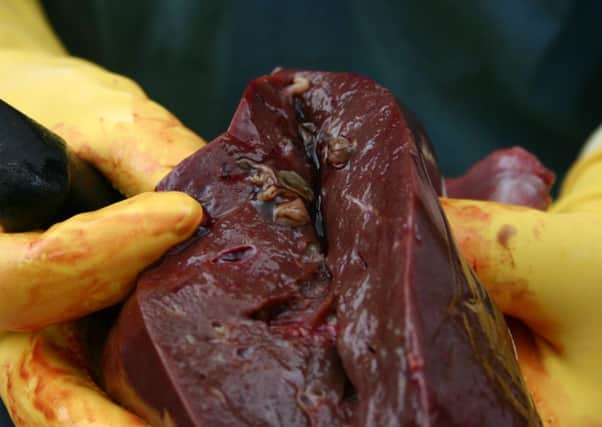Liver fluke infection on the increase


The Quality Meat Scotland workshop, hosted by the Moredun Research Institute, focused on the current fluke situation and methods of control.
Fluke infection costs the UK agriculture industry around £300million per year due to production losses, with liver condemnations alone costing £3.2million in 2010.
Advertisement
Hide AdAdvertisement
Hide Ad“Evidence from various sources suggests that the prevalence of infection has increased considerably in recent years,” said Dr Philip Skuce, senior research scientist at Moredun.
“Changing weather patterns, leading to mild winters and wet summers were thought to be primarily responsible, as these conditions favour the fluke’s survival in the environment. However, increasing reports of drug resistance and increased animal movements and changes to farming management practices may also play a role.”
Experts from the University of Liverpool, Scotland’s Rural College, and the Centre for Ecology & Hydrology joined those from Moredun to dispel some of the myths around the management of liver fluke.
Working with George Milne from the National Sheep Association and Callum Harvey from Harbro, the scientists examined the current situation and looked at how last year’s weather may continue to affect fluke infection rates this year.
Advertisement
Hide AdAdvertisement
Hide AdThe team reported that there had been a 10-fold increase in fluke incidence being reported in the last quarter of 2012 compared to the same period in 2011 and this was specifically attributed to the exceptionally wet summer experienced across most of the UK last year.
In addition to discussing drug-based means of controlling fluke, the role of the mud snail and the environmental conditions that favour its survival and reproduction were examined.
The conflicts between environmental schemes that favour biodiversity and the management practices needed to keep livestock fluke-free were widely aired.
The experts identified the importance of the algae that the snails feed on and how its growth could be reduced, including providing dry standing around water troughs and reducing poaching of the land.
Advertisement
Hide AdAdvertisement
Hide Ad“There are growing concerns about drug resistance and, unanswered questions, for example, what happens to fluke cysts and eggs in silage, slurry or hay,” commented Prof Charlotte Maltin, science and innovation manager at QMS.
As fluke affects its host’s immune system and can affect diagnosis and susceptibility to other pathogens, including bovine tuberculosis, new means of controlling fluke are urgently needed.